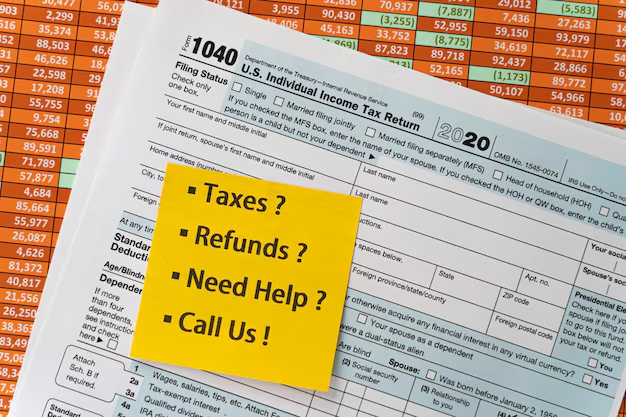Understanding Tax Forms: Is a 1040 Form the Same as a W-2?
Navigating through tax forms can be a daunting task, especially when faced with multiple documents that each serve different purposes. One common question that arises during tax season is whether a 1040 Form is the same as a W-2. Despite both being integral parts of the tax filing process, they are distinct forms used for different purposes. Understanding the differences between these forms can simplify tax filing and ensure you correctly report your income and withholdings.
The Basics: What Is a 1040 Form?
The 1040 Form is a fundamental document used by U.S. taxpayers to file their annual income tax return with the Internal Revenue Service (IRS). Here’s a breakdown of its key features:
- Purpose: The 1040 Form is used to report your annual income, claim tax deductions and credits, and calculate how much tax you owe or how much refund you should receive.
- Components: It includes sections for income reporting, adjustments, tax credits, and taxable income calculation.
- Variations: There are several types of 1040 Forms, including the standard 1040, the 1040-SR for seniors, and versions 1040-NR for non-resident aliens, each catering to different taxpayer needs.
Decoding the W-2 Form: What’s It For?
The W-2 Form, also known as the Wage and Tax Statement, is another crucial document in the tax filing process, but it serves a different role:
- Purpose: The W-2 is provided by employers to employees, summarizing income earned and taxes withheld throughout the year.
- Components: It includes information on wages, salaries, tips, and other compensation, as well as the taxes withheld for Social Security, Medicare, and income taxes.
- Distribution: Employers must issue W-2s to employees and the IRS, providing a third-party verification of your earnings and withholdings.
Key Differences: 1040 vs. W-2
Understanding the distinctions between these forms is crucial for accurate tax filing:
- Source: The 1040 Form is completed and filed by the taxpayer, while the W-2 is issued by an employer.
- Function: A 1040 calculates total taxable income and any refund or tax due, whereas a W-2 reports earnings and withholdings to the IRS.
- Timing: You’ll receive your W-2 in January or early February, which provides necessary information to complete your 1040 by the filing deadline.
How the W-2 Relates to the 1040
While they are separate forms, the W-2 and 1040 are interconnected:
- Data Source: Information from the W-2 is crucial for completing certain sections of the 1040, particularly those involving wages and withholdings.
- Accuracy: Ensure that the income reported on your 1040 matches your W-2 to avoid discrepancies and potential IRS notices.
💡 Quick Tips for Taxpayers
Here is a summary of actionable advice and key takeaways for handling these forms:
- 📄 Keep Organized: Retain all W-2 forms from each employer to ensure accurate reporting on your 1040.
- 🔍 Double-Check Figures: Make sure the income and withholding amounts on your 1040 align with those on your W-2.
- 🗓️ Timely Filing: Aim to file your 1040 by the annual deadline to avoid penalties or interest.
Exploring Related Tax Forms
In addition to the 1040 and W-2, several other documents play important roles in tax calculations, catering to specific circumstances:
1099 Forms
- Purpose: Report various types of income other than wages, such as freelance work, interest, dividends, or rental earnings.
- Varieties: Includes 1099-MISC for miscellaneous income, 1099-INT for interest income, and others specific to different income types.
Form 1040 Schedule C
- Purpose: Used by self-employed individuals to report business income and expenses.
- Importance: Complements the 1040 form if you are a business owner or contractor, allowing deduction of eligible business expenses from taxable income.
Form 1098-E
- Purpose: Used to report student loan interest paid, which might be deductible if you meet certain requirements.
- Benefit: Potentially reduces taxable income when reported on your 1040, leading to tax savings.
Frequently Asked Questions About Tax Forms
To further ease the process, here are a few common questions and answers related to these tax forms:
What Should I Do if I Don’t Receive My W-2?
If your W-2 hasn’t arrived by mid-February, consider these steps:
- Contact your employer to request a copy.
- Confirm with HR or payroll departments for the correct mailing address.
- If unresolved, you can use Form 4852 as a substitute, but verification with the IRS might be required.
Can I File Without a W-2?
While it is ideally not recommended, you can file using Form 4852 if you’re unable to obtain your W-2 by the deadline. However, this could complicate your filing, necessitating adjustments after receiving the official W-2.
Are There Fines for Misreporting On My Tax Forms?
Accurate reporting on all tax forms is essential:
- Underreporting income or claiming excessive deductions can lead to penalties and interest.
- If you discover an error, filing an amended return using Form 1040-X is crucial.
Who Must File a 1040 Form?
Almost all taxpayers who have received income above a certain threshold are required to file a 1040. Even when income doesn’t meet typical filing thresholds, consider filing to claim refundable credits.
Conclusion
Understanding the roles and differences of the 1040 and W-2 forms is critical for ensuring a smooth tax filing experience. By recognizing their distinct yet interconnected roles, you can improve the accuracy of your tax return and avoid potential issues with the IRS. Be sure to maintain organized records of all your tax documents, report income accurately, and always aim to file by the relevant deadlines. Navigating tax season with clarity and confidence not only helps you comply with tax laws but also empowers you in managing your financial well-being.
